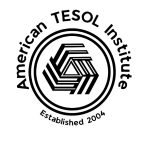Observation plays a pivotal role in Teaching English to Speakers of Other Languages (TESOL) instruction. It allows us to assess a teacher’s effectiveness, identify areas for improvement, and provide valuable feedback for professional development. However, the act of observation itself is not without its pitfalls. Unrecognized biases can cloud our judgment and create an inaccurate picture of a teacher’s performance.
TESOL observation serves four key functions:
- Evaluation: It allows us to assess how well teachers are implementing curriculum, utilizing teaching methods, and managing the classroom environment.
- Professional Development: Observations provide valuable in-sight into a teacher’s strengths and weaknesses, forming the basis for targeted feedback and growth.
- Research: Observing classrooms offers researchers valuable data on teaching practices, student learning outcomes, and the effectiveness of various TESOL methodologies.
- Student Support: By observing student participation and understanding difficulties, teachers can tailor instruction to better meet individual needs.
While observation offers a wealth of benefits, three main biases can distort our perception:
- The Hawthorne Effect: When teachers are aware they are being observed, they may alter their behavior, potentially adopting strategies they don’t normally use, leading to an unrealistic portrayal of their usual teaching style.
- Confirmation Bias: Observers may subconsciously focus on evidence that confirms pre-existing beliefs about a teacher’s strengths or weaknesses, overlooking contradictory information.
- The Observer Effect: The mere presence of an observer can change both student and teacher behavior. Students may become nervous or act out, while teachers may feel pressured to perform, altering their natural classroom interactions.
So, how can we mitigate these biases to ensure a more accurate and objective observation process?
- Pre-observation Meetings: Open communication between observers and teachers can clarify expectations, reduce anxiety, and ensure everyone is on the same page.
- Multiple Observations: Spreading observations across different class sessions allows for a more holistic picture, capturing a representative sample of the teacher’s natural teaching style.
- Focus on Specifics: Observers should focus on clearly defined criteria and specific teaching behaviors rather than subjective impressions.
- Post-observation Discussions: Engaging in open dialogue with the teacher after the observation allows for clarification, reflection, and a deeper understanding of the observed practices.
By acknowledging and mitigating these biases, we can transform observation from a potentially subjective exercise into a powerful tool for improving TESOL instruction and supporting the professional growth of teachers.



